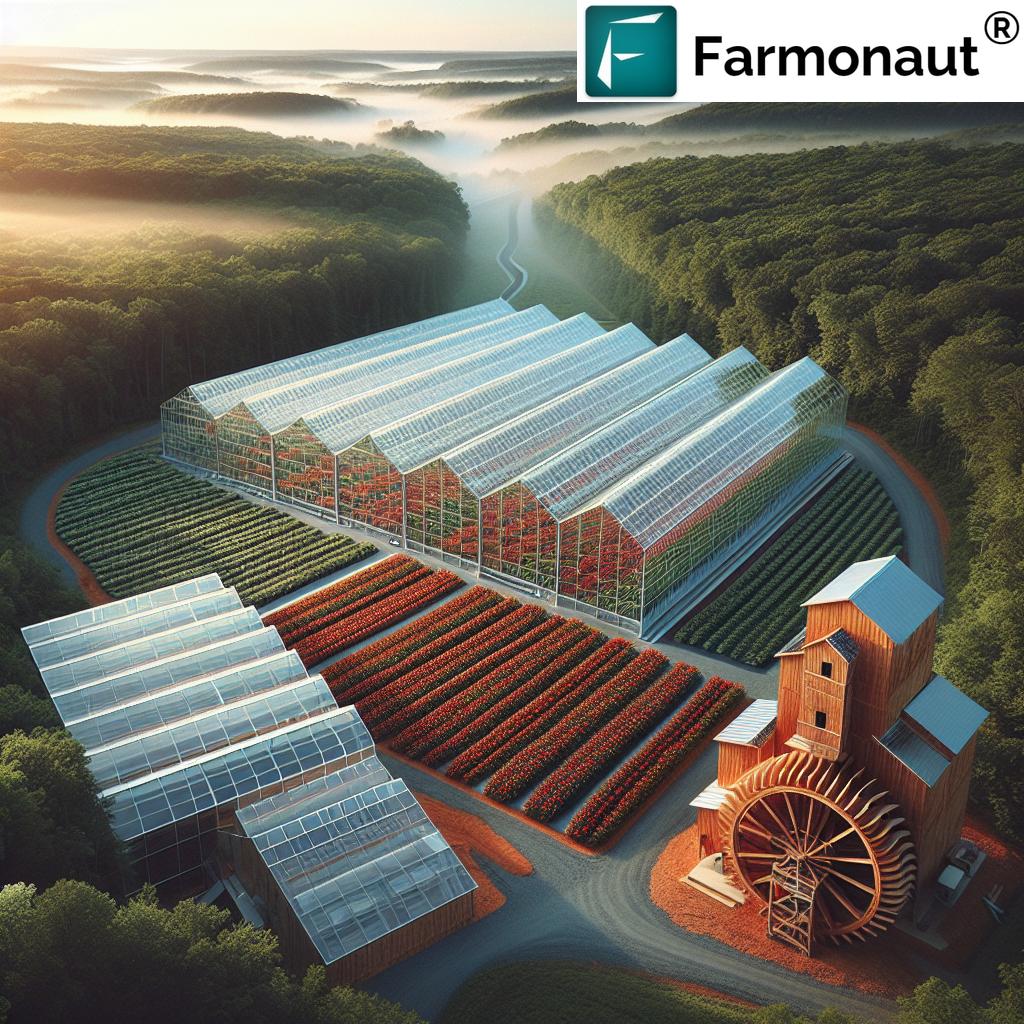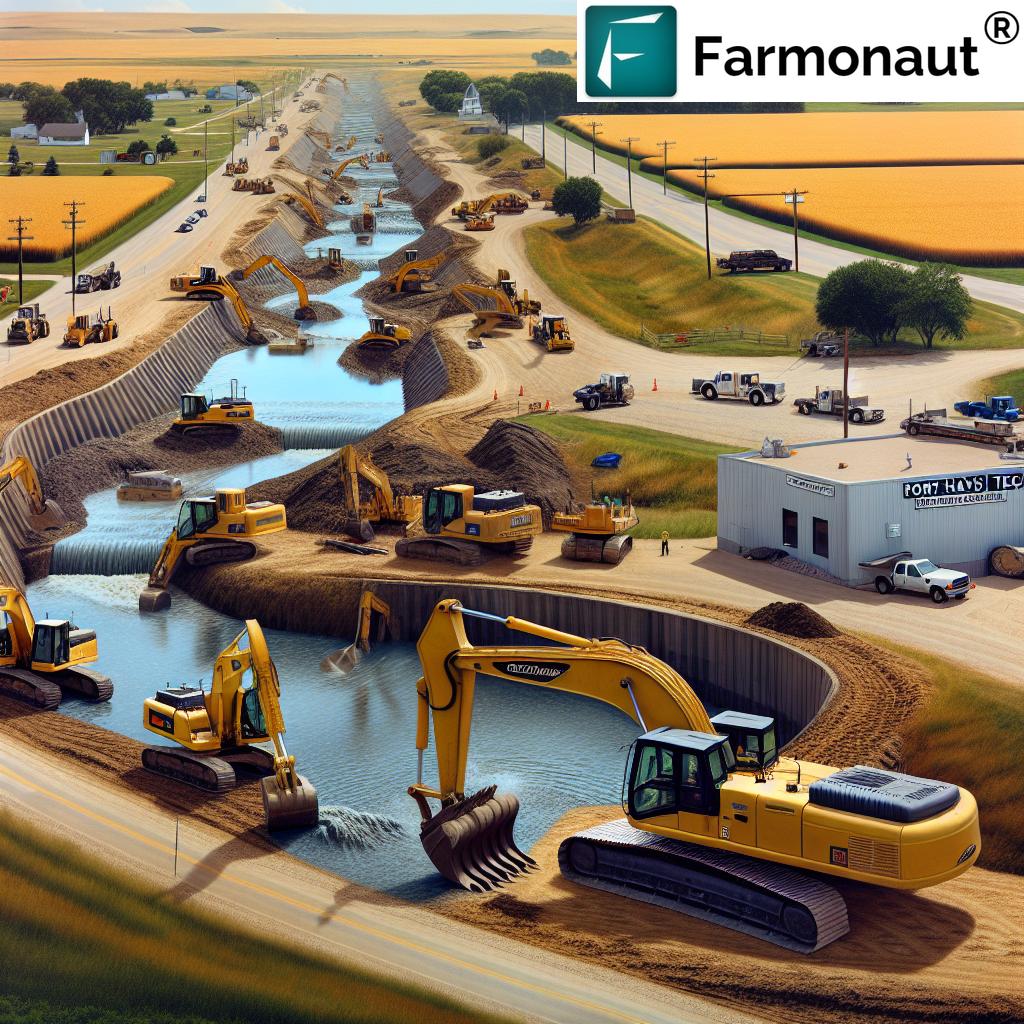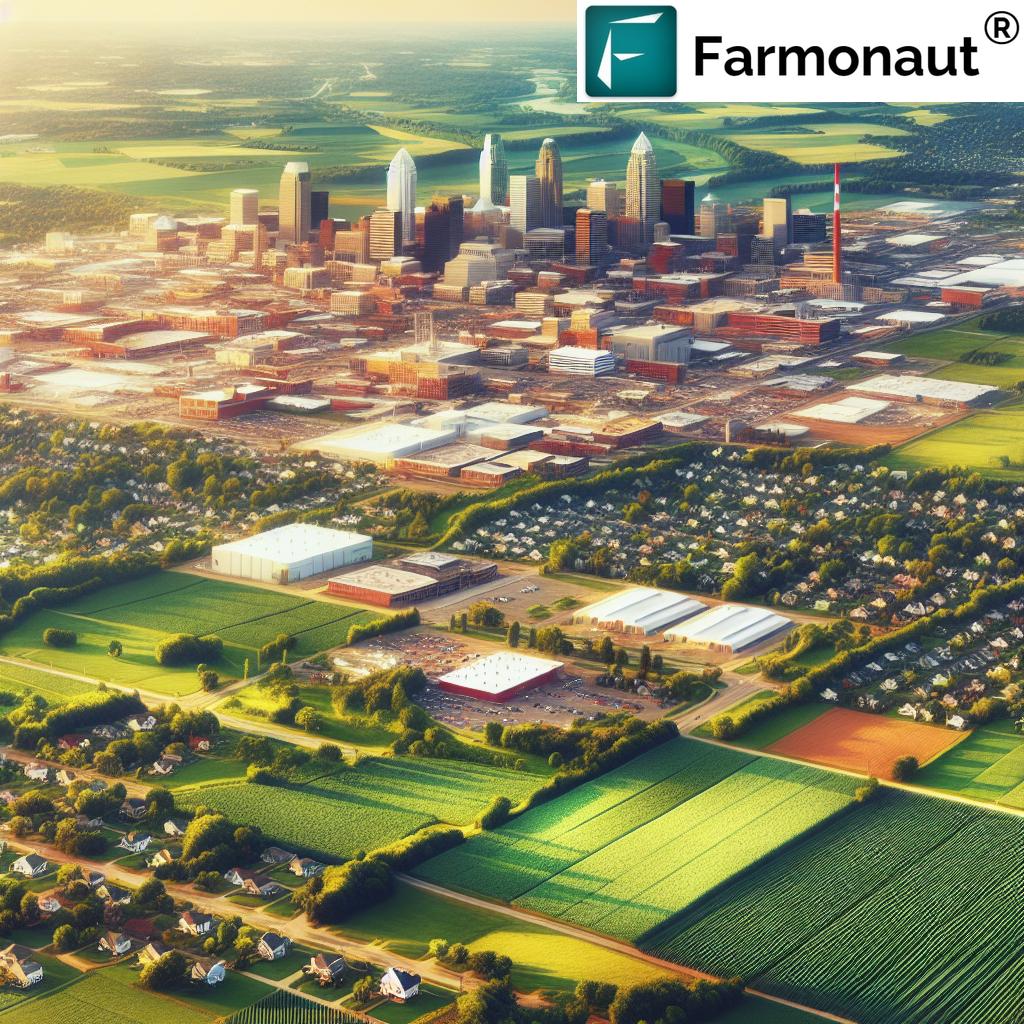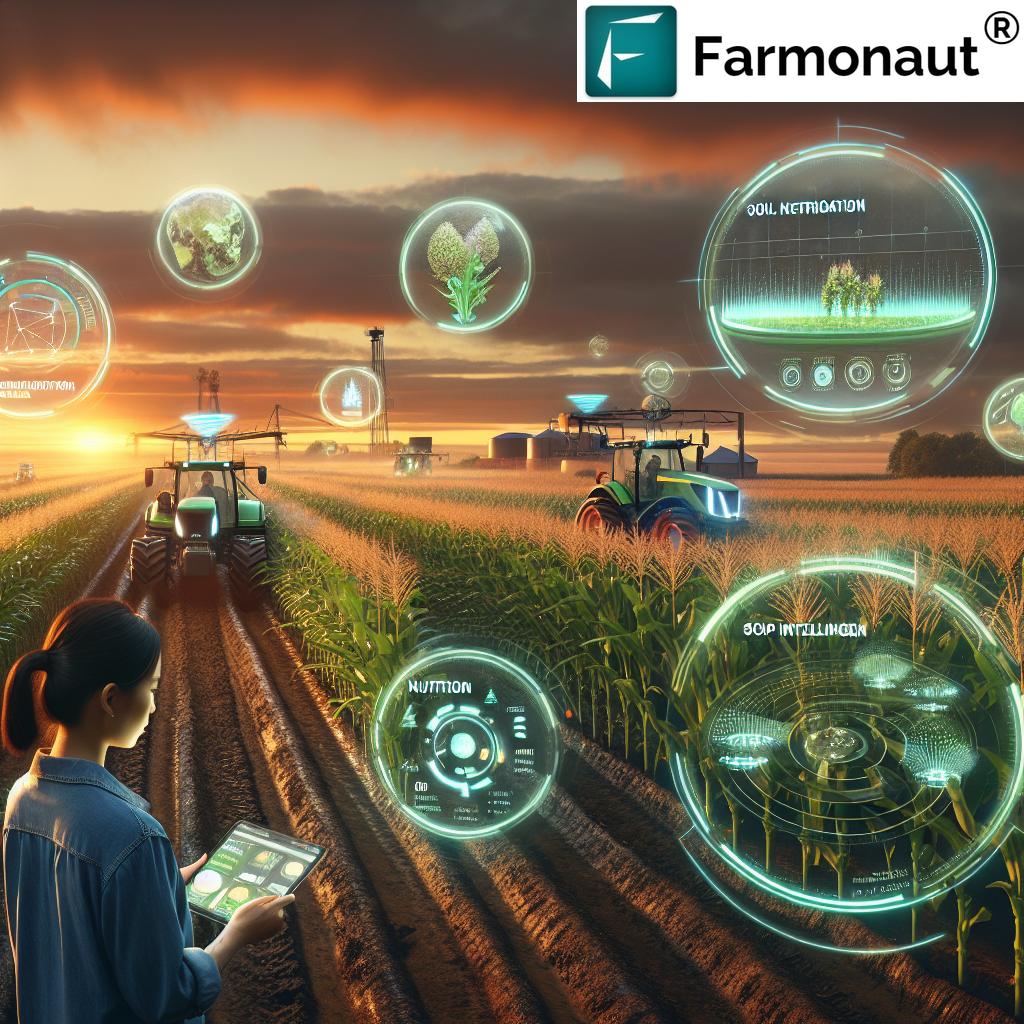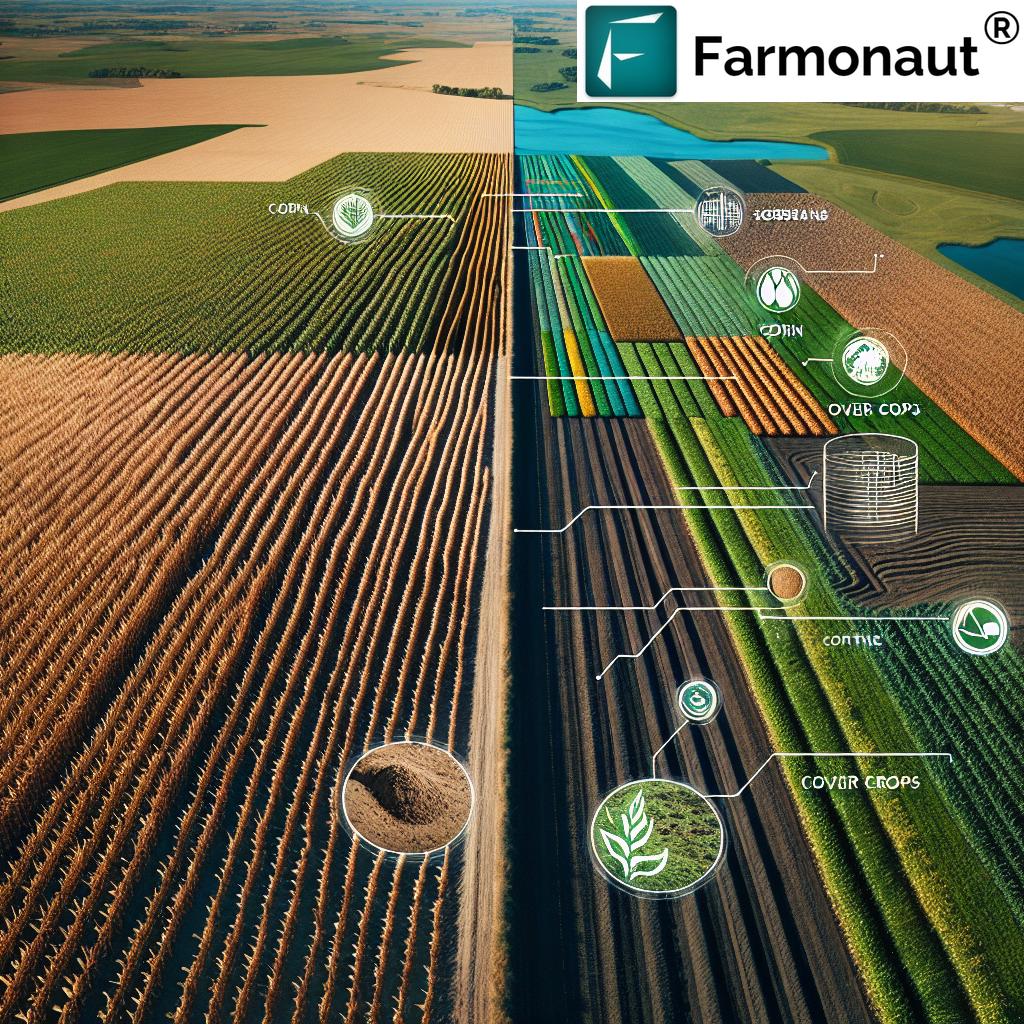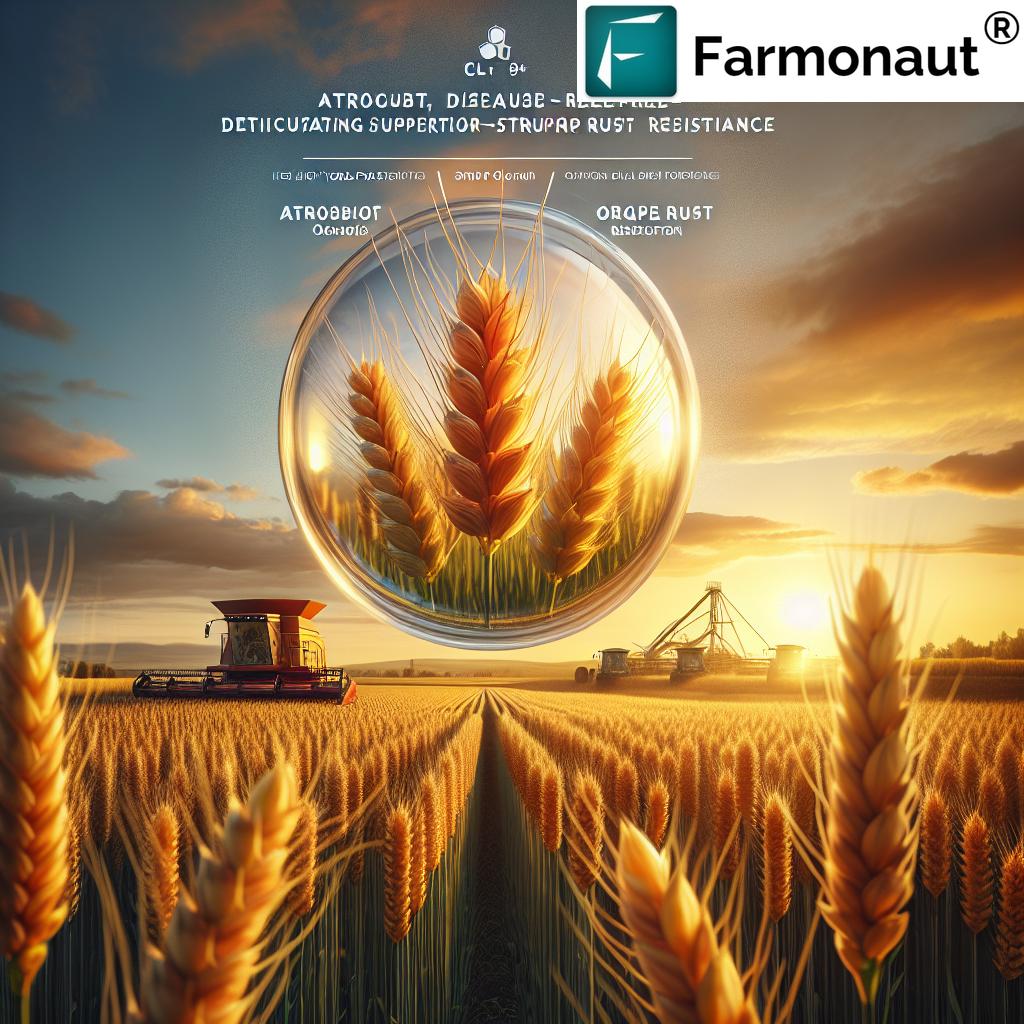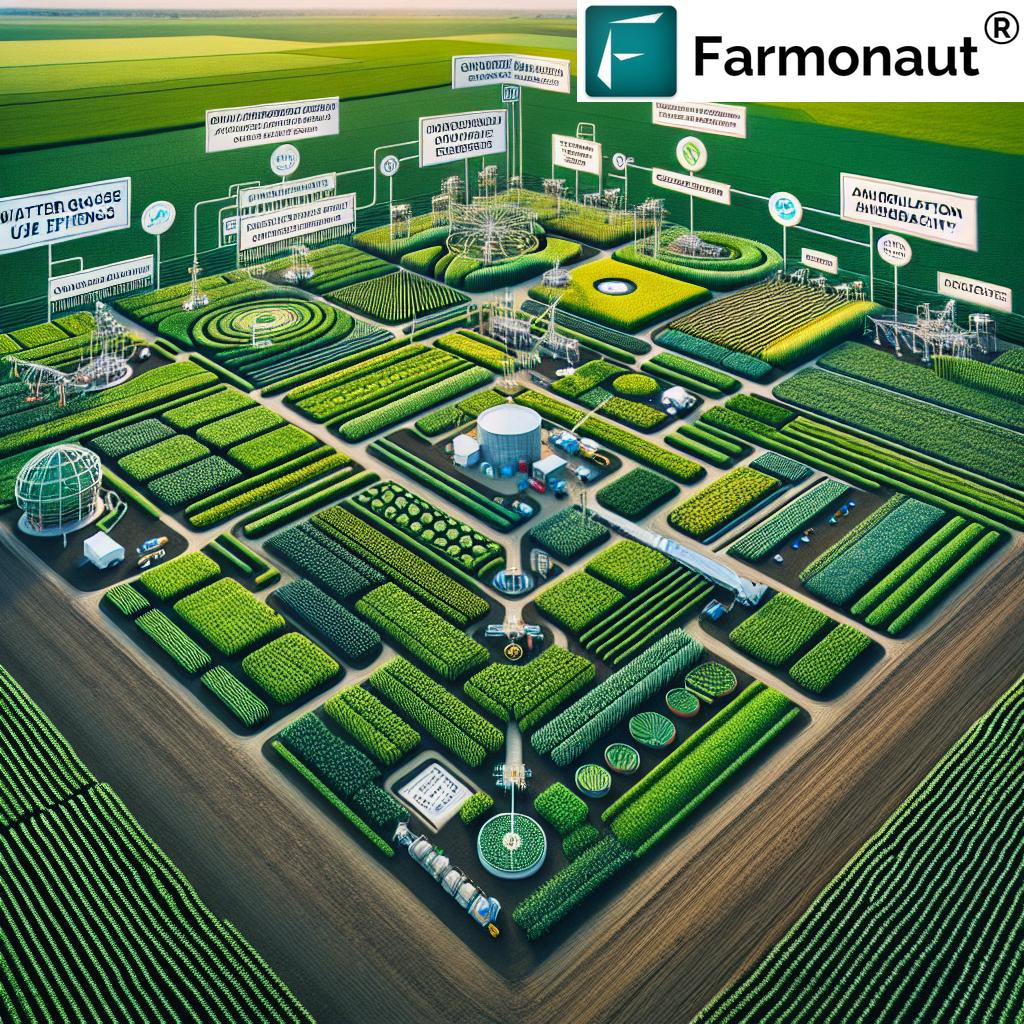Revolutionizing Midwest Agriculture: How Agroforestry Boosts Sustainability and Farmer Profits in Illinois
“Implementing agroforestry on just 5% of suitable lands in Illinois could store 43 metric tons of CO2e annually.”
In the heart of America’s breadbasket, a quiet revolution is taking root. We’re witnessing a transformative shift in agricultural practices that promises to reshape the landscape of Illinois and the broader Midwest. This change comes in the form of agroforestry, an innovative approach that integrates trees and shrubs into traditional farming systems. As we delve into this groundbreaking development, we’ll explore how agroforestry is not just a novel concept but a powerful tool for enhancing sustainability and boosting farmer profits in the Prairie State.
Understanding Agroforestry: A Paradigm Shift in Midwest Agriculture
Agroforestry represents a significant departure from conventional agricultural practices in the Midwest. For generations, the vast, open fields of Illinois have been synonymous with monoculture crops like corn and soybeans. However, the integration of trees into these agricultural landscapes is challenging long-held notions about farming in this region.
At its core, agroforestry is about creating synergies between woody perennials and agricultural crops or livestock. This integration can take various forms, each offering unique agroforestry benefits to both the environment and the farmer’s bottom line. Let’s explore some of the key Midwest agroforestry practices that are gaining traction:
- Alley Cropping: This involves planting rows of trees or shrubs at wide spacings, with agricultural crops grown in the alleys between the rows.
- Windbreaks: Linear plantings of trees and shrubs that protect crops, animals, and soil from wind damage.
- Riparian Buffers: Strips of trees, shrubs, and grasses planted along waterways to filter runoff and protect water quality.
- Silvopasture: The integration of trees with forage and livestock production.
These practices are not just theoretical concepts; they’re being implemented across Illinois, transforming the agricultural landscape and offering tangible benefits to farmers and the environment alike.
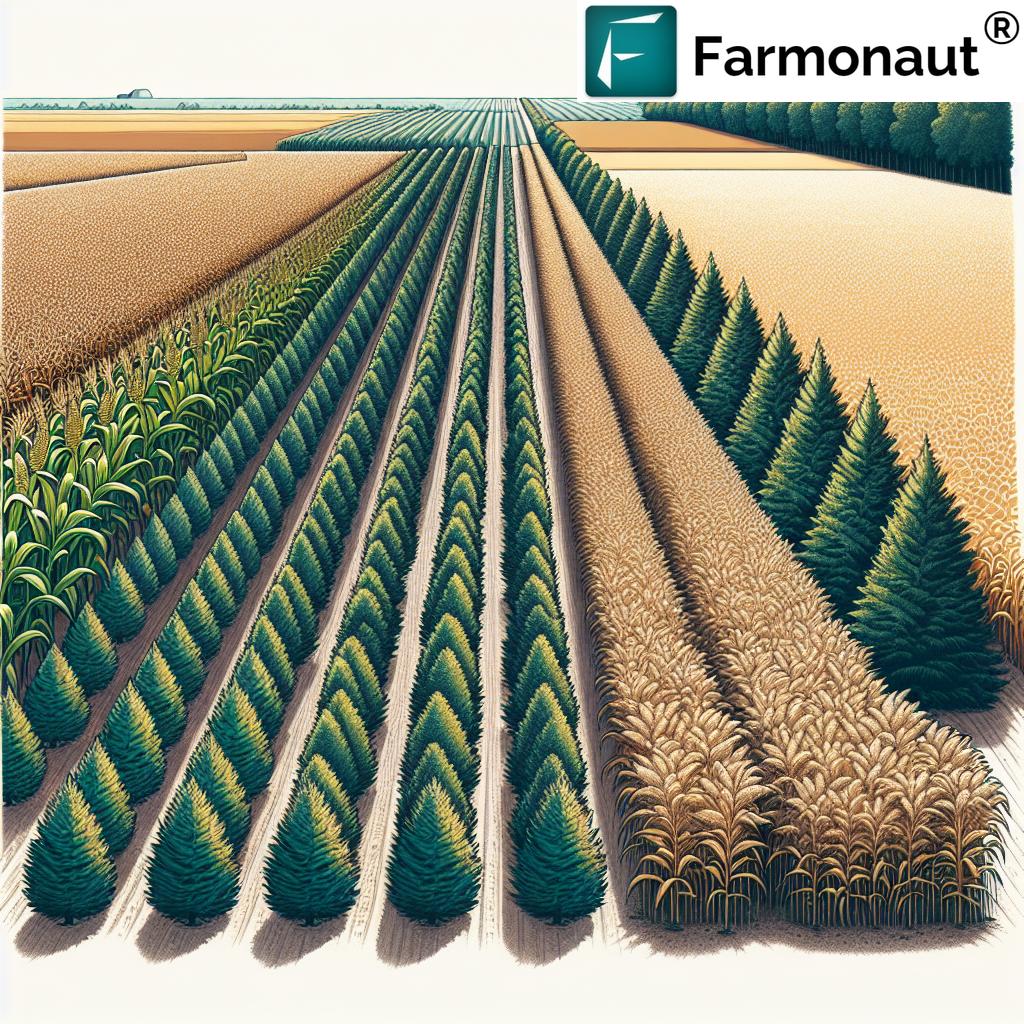
The Environmental Impact of Agroforestry in Illinois
The environmental impact of agroforestry in Illinois is profound and multifaceted. As we integrate trees into our agricultural systems, we’re witnessing a cascade of positive effects on the ecosystem:
- Carbon Sequestration: Trees are natural carbon sinks, absorbing CO2 from the atmosphere and storing it in their biomass and the soil. Research indicates that implementing agroforestry on just 5% of suitable lands in Illinois could store an impressive 43 metric tons of CO2e annually.
- Soil Health: The deep root systems of trees help prevent soil erosion, increase organic matter content, and improve soil structure. This leads to enhanced water retention and nutrient cycling.
- Biodiversity: By creating diverse habitats, agroforestry systems support a wide range of flora and fauna, including beneficial insects and pollinators.
- Water Quality: Riparian buffers and other agroforestry practices help filter agricultural runoff, reducing the amount of sediment and nutrients entering waterways.
These environmental benefits are not just good for the planet; they translate into tangible advantages for farmers as well. Improved soil health leads to better crop yields, while enhanced biodiversity can reduce pest pressures and the need for chemical inputs.
Economic Viability: The Farmer’s Perspective
While the environmental benefits of agroforestry are clear, its adoption hinges on its economic viability. Fortunately, research from the University of Illinois Urbana-Champaign and other institutions is demonstrating that agroforestry can indeed be a profitable venture for Midwest farmers.
Here are some key economic advantages of adopting agroforestry practices:
- Diversified Income Streams: By incorporating trees, farmers can tap into new markets such as timber, fruits, nuts, and even medicinal plants.
- Risk Mitigation: The diversification of crops and income sources helps buffer against market fluctuations and extreme weather events.
- Increased Land-Use Efficiency: Practices like alley cropping allow for the production of multiple crops on the same piece of land.
- Long-term Investment: While there may be upfront costs, trees represent a long-term asset that appreciates over time.
To illustrate these points, let’s consider a hypothetical case of an Illinois farmer implementing an alley cropping system with walnut trees and corn:
| Agroforestry Practice | Environmental Benefits | Economic Benefits | Implementation Challenges |
|---|---|---|---|
| Alley Cropping (Walnut + Corn) |
– Carbon sequestration (up to 5 metric tons CO2e/acre/year) – Improved soil health – Enhanced biodiversity |
– Diversified income (timber + annual crop) – Potential 10-15% increase in corn yield – Long-term timber value |
– Initial establishment costs – Specialized equipment needs – Management complexity |
| Windbreaks |
– Reduced soil erosion – Wildlife habitat – Carbon storage (2-3 metric tons CO2e/acre/year) |
– Crop yield increases of 5-10% – Reduced wind damage – Potential for biomass production |
– Land taken out of production – Maintenance requirements – Potential crop shading |
| Riparian Buffers |
– Improved water quality – Flood mitigation – Carbon sequestration (3-4 metric tons CO2e/acre/year) |
– Potential for specialty crops (e.g., berries) – Reduced erosion-related losses – Potential for conservation payments |
– Regulatory compliance – Reduced cropland area – Initial establishment costs |
This table provides a snapshot of the multifaceted benefits and challenges associated with different agroforestry practices in Illinois. It’s clear that while there are implementation hurdles, the potential environmental and economic gains are significant.
The Role of Technology in Agroforestry Implementation
As we embrace agroforestry in the Midwest, technology plays a crucial role in its successful implementation and management. Advanced tools and platforms are making it easier for farmers to adopt and optimize these complex systems.
One such technological innovation comes from Farmonaut, a company at the forefront of precision agriculture. Their satellite-based farm management solutions offer valuable insights that can enhance agroforestry practices:
- Crop Health Monitoring: Farmonaut’s satellite imagery can help farmers track the health of both their tree crops and intercropped annuals, ensuring optimal growth and early detection of issues.
- Resource Management: By providing data on soil moisture levels and other critical metrics, Farmonaut’s platform aids in efficient resource allocation, crucial for managing the complex water and nutrient needs of agroforestry systems.
- Carbon Footprint Tracking: As carbon sequestration is a key benefit of agroforestry, Farmonaut’s carbon footprinting feature allows farmers to quantify and monitor their environmental impact.
To learn more about how Farmonaut’s technology can support agroforestry initiatives, visit their web application or explore their API for custom integrations.
Mapping the Future: A Decision Support System for Agroforestry
“A new mapping tool for agroforestry in the Midwest considers both ecological and economic factors for optimal implementation.”
One of the most exciting developments in the push for agroforestry adoption in Illinois is the creation of a sophisticated mapping tool by researchers at the University of Illinois Urbana-Champaign. This tool represents a significant leap forward in our ability to strategically implement agroforestry practices across the Midwest.
The mapping tool is designed to identify areas where agroforestry can provide the greatest environmental benefits while remaining economically viable. It takes into account a wide range of factors, including:
- Soil characteristics
- Topography
- Climate data
- Existing land use
- Economic indicators
- Social factors
By considering this comprehensive set of variables, the tool provides a nuanced understanding of where different agroforestry practices are most likely to succeed. This is crucial because the success of agroforestry depends heavily on local conditions and careful planning.
Customizable Decision Support
One of the most valuable aspects of this mapping tool is its flexibility. Users can customize their assessments based on different parameters, such as:
- Specific tree species
- Economic priorities
- Environmental goals
- Scale of implementation
This customization allows farmers, policymakers, and researchers to tailor their agroforestry plans to specific needs and objectives. For instance, a farmer primarily interested in windbreaks for crop protection can focus on areas where wind erosion is a significant issue. Alternatively, a conservation organization might prioritize riparian buffers in watersheds with water quality concerns.
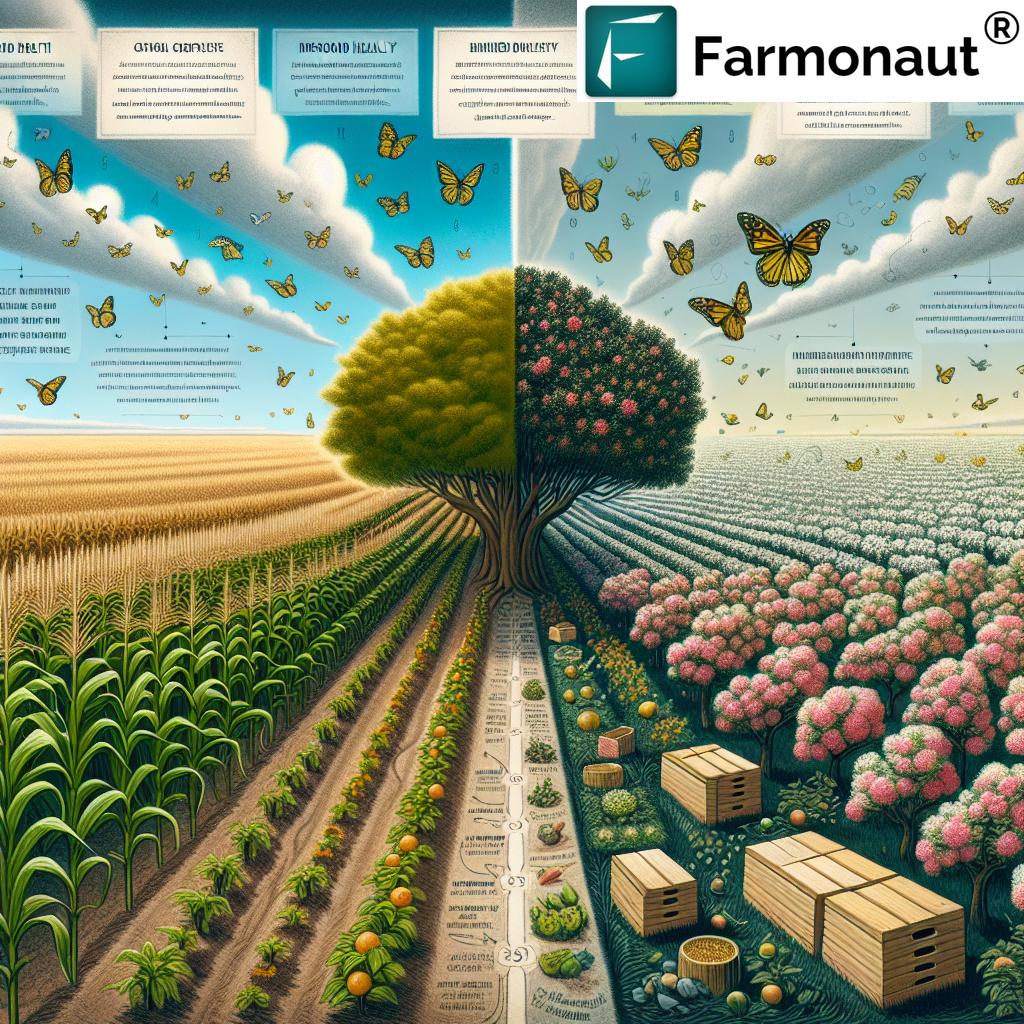
Implications for Policy and Practice
The development of this mapping tool has significant implications for both policy and practice in Illinois and beyond:
- Targeted Incentives: Policymakers can use the tool to design more effective incentive programs, directing resources to areas where agroforestry is likely to have the greatest impact.
- Research Prioritization: Researchers can identify knowledge gaps and prioritize studies in areas where agroforestry shows the most promise or faces unique challenges.
- Farmer Decision-Making: For farmers considering agroforestry, the tool provides valuable insights into which practices might be most suitable for their specific land and economic situation.
- Landscape-Level Planning: Conservation organizations and government agencies can use the tool for large-scale planning, identifying corridors and regions where coordinated agroforestry implementation could have synergistic benefits.
As we continue to refine and expand this mapping tool, it has the potential to dramatically accelerate the adoption of agroforestry across Illinois and the broader Midwest region.
Overcoming Barriers to Adoption
While the benefits of agroforestry are clear, and tools like the mapping system are making implementation more strategic, there are still barriers to widespread adoption in Illinois. Understanding and addressing these challenges is crucial for the future of agroforestry in the Midwest.
1. Initial Costs and Long-Term Investment
One of the primary barriers to agroforestry adoption is the initial cost of implementation. Establishing trees and modifying farming practices can require significant upfront investment. Moreover, the long-term nature of tree growth means that some economic benefits may not be realized for several years.
Potential Solutions:
- Develop targeted financial incentives and cost-sharing programs
- Provide low-interest loans for agroforestry implementation
- Create markets for early-stage agroforestry products (e.g., biomass for energy)
2. Knowledge and Skill Gaps
Agroforestry systems are more complex than traditional monocultures and require a different set of management skills. Many farmers may lack the knowledge or experience to implement these systems effectively.
Potential Solutions:
- Expand agroforestry education and training programs
- Develop mentorship programs pairing experienced agroforesters with new adopters
- Create demonstration sites showcasing successful agroforestry practices
3. Cultural and Social Factors
In regions like Illinois, where large-scale monoculture has been the norm for generations, there may be cultural resistance to integrating trees into farmland. Changing long-held perceptions about what constitutes “good farming” can be challenging.
Potential Solutions:
- Highlight success stories of local farmers who have adopted agroforestry
- Engage community leaders and influencers in promoting agroforestry benefits
- Incorporate agroforestry into agricultural education at all levels
4. Policy and Regulatory Hurdles
Existing agricultural policies and regulations may not adequately support or may even hinder agroforestry adoption. For instance, crop insurance programs might not cover agroforestry systems as comprehensively as traditional crops.
Potential Solutions:
- Review and revise policies to better accommodate agroforestry practices
- Develop specific agroforestry insurance products
- Create tax incentives for long-term agroforestry investments
By addressing these barriers systematically, we can create a more favorable environment for agroforestry adoption in Illinois and across the Midwest.
The Future of Agroforestry in Illinois: A Vision for Sustainable Agriculture
As we look to the future, the potential for agroforestry to transform Illinois agriculture is immense. By embracing these practices, we can create a more resilient, productive, and sustainable agricultural landscape that benefits farmers, communities, and the environment.
Envisioning the Illinois Farm of 2050
Imagine an Illinois farm in 2050 where:
- Rows of native hardwoods interspersed with strips of corn and soybeans create a diverse, productive landscape
- Windbreaks protect crops and soil, while providing habitat for beneficial insects and birds
- Riparian buffers along streams and rivers filter runoff, improving water quality and supporting aquatic ecosystems
- Farmers harvest a mix of annual crops, fruits, nuts, and timber, providing stable income throughout the year
- Advanced technology, like Farmonaut’s satellite monitoring, helps optimize the management of these complex systems
This vision is not just a dream; it’s a achievable reality if we continue to invest in research, education, and policy support for agroforestry.
The Role of Research and Innovation
Ongoing research will be crucial in refining agroforestry practices for the Midwest context. Areas of focus may include:
- Developing tree varieties optimized for agroforestry systems in Illinois
- Improving our understanding of tree-crop interactions and optimal spacing
- Enhancing the economic modeling of agroforestry systems to better predict long-term returns
- Exploring innovative agroforestry designs that maximize both environmental and economic benefits
Technologies like those offered by Farmonaut will play an increasingly important role in managing these complex systems. The integration of satellite imagery, AI-driven insights, and precision agriculture tools will enable farmers to optimize their agroforestry practices with unprecedented accuracy.
Policy and Market Development
To fully realize the potential of agroforestry in Illinois, supportive policies and market structures will be essential. This may include:
- Developing carbon markets that reward farmers for the carbon sequestration achieved through agroforestry
- Creating certification programs for agroforestry products to capture premium prices
- Establishing long-term funding mechanisms for agroforestry research and implementation
- Integrating agroforestry into broader climate change mitigation and adaptation strategies
By addressing these areas, we can create an environment where agroforestry is not just a viable option but a preferred approach for many Illinois farmers.
Conclusion: A Call to Action for Illinois Agriculture
The integration of agroforestry into Illinois’s agricultural landscape represents a profound opportunity to address multiple challenges simultaneously. From enhancing farm profitability and resilience to combating climate change and improving environmental health, agroforestry offers a path forward that aligns with the needs of the 21st century.
As we’ve explored throughout this article, the benefits of agroforestry are clear, and the tools for implementation are increasingly sophisticated. The mapping tool developed by University of Illinois researchers, combined with technologies like those offered by Farmonaut, provide farmers with unprecedented support in adopting these practices.
However, realizing the full potential of agroforestry in Illinois will require a concerted effort from all stakeholders:
- Farmers: We encourage you to explore how agroforestry might fit into your operation. Start small, learn, and expand as you see the benefits.
- Policymakers: Consider how regulations and incentives can be adjusted to support agroforestry adoption.
- Researchers: Continue to refine our understanding of agroforestry systems and develop innovations that make implementation easier and more effective.
- Consumers: Support products from agroforestry systems and advocate for sustainable agricultural practices.
By embracing agroforestry, Illinois has the opportunity to lead the Midwest in sustainable agriculture, setting an example for the rest of the country and the world. The journey toward widespread agroforestry adoption may be challenging, but the potential rewards—for farmers, communities, and the planet—are immense.
As we move forward, let’s work together to create an agricultural landscape in Illinois that is not only productive and profitable but also resilient, diverse, and ecologically sound. The future of Midwest agriculture is growing, and it’s growing on trees.
FAQ: Agroforestry in Illinois
Q1: What is agroforestry, and how does it differ from traditional farming?
A1: Agroforestry is an land management approach that integrates trees and shrubs into agricultural systems. Unlike traditional farming, which often focuses on monocultures, agroforestry creates diverse ecosystems that can produce multiple crops and environmental benefits simultaneously.
Q2: What are the main types of agroforestry practices suitable for Illinois?
A2: The main agroforestry practices suitable for Illinois include alley cropping, windbreaks, riparian buffers, and silvopasture. Each of these practices integrates trees into agricultural landscapes in different ways to achieve specific goals.
Q3: How does agroforestry contribute to carbon sequestration?
A3: Trees in agroforestry systems absorb CO2 from the atmosphere and store it in their biomass and in the soil. This process can significantly increase the carbon sequestration potential of agricultural lands compared to traditional crop systems.
Q4: Are there financial incentives available for farmers who adopt agroforestry practices in Illinois?
A4: Yes, there are various incentives available, including cost-share programs through the USDA’s Natural Resources Conservation Service (NRCS) and potential carbon credit markets. It’s best to consult with local agricultural extension offices for the most up-to-date information on available programs.
Q5: How long does it take to see economic returns from agroforestry?
A5: The timeline for economic returns varies depending on the specific practices implemented. Some benefits, like improved crop yields from windbreaks, can be seen relatively quickly. Others, like timber production, may take decades to fully mature. It’s important to view agroforestry as a long-term investment.
Q6: How can technology like Farmonaut’s platform support agroforestry?
A6: Farmonaut’s satellite-based monitoring can help farmers track the health of both tree and crop components in agroforestry systems. It can provide valuable data on soil moisture, vegetation health, and overall system performance, enabling more precise management of these complex systems.
Q7: Does agroforestry require special equipment or skills?
A7: While some agroforestry practices may require specialized equipment or knowledge, many can be implemented with standard farm equipment. However, farmers may need to acquire new skills in tree management and integrated system planning. Training programs and extension services are available to support this learning process.
Q8: How does agroforestry impact biodiversity?
A8: Agroforestry significantly enhances biodiversity by creating diverse habitats within agricultural landscapes. These systems can support a wide range of plant and animal species, including beneficial insects, birds, and small mammals, which are often absent in conventional monoculture systems.
Q9: Can agroforestry help with climate change adaptation in Illinois?
A9: Yes, agroforestry can play a crucial role in climate change adaptation. Trees in agroforestry systems can help moderate local temperatures, improve water retention in soil, and provide protection against extreme weather events like high winds or heavy rains.
Q10: Where can I learn more about implementing agroforestry on my farm in Illinois?
A10: The University of Illinois Extension, the USDA National Agroforestry Center, and local conservation districts are excellent resources for learning about agroforestry implementation in Illinois. Additionally, connecting with experienced agroforesters or visiting demonstration sites can provide valuable insights.
Explore Farmonaut’s Precision Agriculture Solutions
To enhance your agroforestry practices with cutting-edge technology, consider exploring Farmonaut’s suite of precision agriculture tools:
For developers interested in integrating Farmonaut’s technology into their own solutions, check out our API Developer Docs.
Earn With Farmonaut
Earn 20% recurring commission with Farmonaut’s affiliate program by sharing your promo code and helping farmers save 10%. Onboard 10 Elite farmers monthly to earn a minimum of $148,000 annually—start now and grow your income!
Learn more about our Affiliate Program.
Farmonaut Subscriptions
By embracing agroforestry and leveraging advanced technologies like those offered by Farmonaut, Illinois farmers can lead the way in sustainable agriculture, ensuring a prosperous and environmentally sound future for generations to come.






